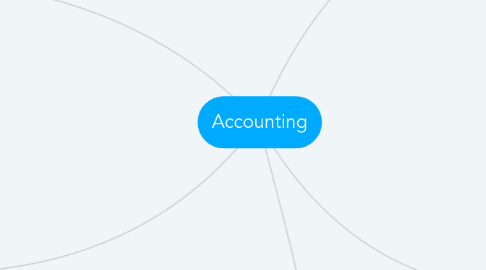
1. Employee Positions
1.1. Bookkeeper
1.1.1. The creation of financial transactions includes posting information to accounting journals or accounting software from such source documents as invoices to customers, cash receipts, and supplier invoices
1.2. Forensic Accountant
1.2.1. Possess specialized accounting skills. They utilize investigative, auditing, and accounting skills to analyze an organization's financial statements while investigating fraud
1.3. Auditor
1.3.1. Ensures compliance with established internal control procedures by examining records, reports, operating practices, and documentation. Verifies assets and liabilities by comparing items to documentation
1.4. Chief Financial Officer
1.4.1. The CFO reports directly to the President/Chief Executive Officer (CEO) and directly assists the Chief Operating Officer (COO) on all strategic and tactical matters as they relate to budget management, cost benefit analysis, forecasting needs and the securing of new funding
2. Forms of Business Ownership
2.1. Corporation (Shareholders)
2.1.1. Ex. Google, Microsoft, FedEx, etc
2.2. Partnership (2-3 Owners)
2.2.1. Law Firms, Spousal Ventures, Medical Practice, etc
2.3. Sole Proprietorship (1 Owner)
2.3.1. Freelance Writer, Restaurant Owner, IT Consultant, etc
2.4. Limited Liability Company
2.4.1. Dollar General, Facebook, Toys "R" Us, etc
3. GAAPS Accounting Principles
3.1. Cost Principle
3.1.1. Assets be recorded at the cash amount (or its equivalent) at the time that an asset is acquired
3.2. Matching Principle
3.2.1. Directs a company to report an expense on its income statement in the same period as the related revenues
3.3. Full Disclosure Principle
3.3.1. Requires a company to provide the necessary information regarding the company in order for officials to make changes
3.4. Time Period Assumption
3.4.1. Allows the accountant to divide up the complex, ongoing activities of a business into periods of specific amount of time
4. Equity
4.1. Revenue
4.1.1. Amount of money brought in by sales and displays the profit that was made (
4.2. Expenses
4.2.1. Money spent on paying for labor and other essentials required for a business to rent (Ex. Rent, Workforce, Insurance)
4.3. Drawings
4.3.1. Amount of cash owner uses for personal use
4.4. Beginning Capital + Net Income – Net Loss – Drawings = Ending Capital
4.4.1. Fundamental Accounting Equation
5. Financial Statements
5.1. Balance Sheet
5.1.1. The purpose of the balance sheet is to give users an idea of the company's financial position along with displaying what the company owns and owes
5.2. Trial Balance
5.2.1. To prove that the value of all the debit value balances equal the total of all the credit value balances. If it is not equal the there is a mistake in the ledger
5.3. Income Statement
5.3.1. To show the reader how much profit or loss an organization generated during a reporting period (Week, Month, Year)
5.4. Statement of Changes in Equity
5.4.1. Presents an entity's profit or loss for a reporting period, items of income and expense recognized by displaying changes in the policy that have occured

